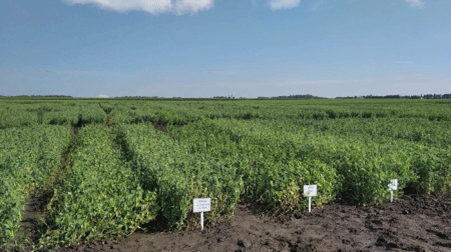Pea Cultivation in Kaliningrad: Growth Driven by Foreign Investment and Technological Advancements
The Kaliningrad region in Russia has witnessed a remarkable expansion in its pea cultivation in 2024, driven by both technological advancements and foreign investment. As of the latest reports, the area dedicated to pea crops has increased by 65 hectares, bringing the total area to 149 hectares. This represents a 77.4% growth compared to the previous year. The harvest has also seen significant improvement, with total yields reaching 327 tons—an 18.9% increase over last year’s crop output.
- Technological Advancements Fueling Growth
The surge in pea production can be attributed to the adoption of intensive agricultural technologies. The average yield has risen substantially to 29 quintals per hectare, compared to just 8.2 quintals per hectare in 2023. This dramatic increase reflects the region’s shift toward modern farming practices, such as precision farming, crop rotation, and the use of advanced fertilizers and pesticides. The region’s farmers are embracing these techniques to optimize productivity and ensure sustainable farming practices. - The Role of Foreign Companies in the Local Pea Industry
A noteworthy feature of Kaliningrad’s pea cultivation is the dominance of foreign-owned companies. Five major players are currently involved in pea farming in the region, most of which are foreign-owned. Among them is Agrobonum, based in the Bagrationovsky district. This company, led by German national Frels Jonas Dirk Ernst, has seen a 20% growth in revenue, reaching 121.6 million rubles in 2023. However, the company faced regulatory challenges in 2023, being fined for improper handling of pesticides and agrochemicals.
Another key player is Mamnovo Agro, which reported an annual revenue of 524.6 million rubles, a 13% increase from the previous year. This company, previously known as Mamnovo Agro Tangemann & Sons, is also foreign-owned, with its directors and shareholders holding German citizenship. The company’s growth demonstrates the profitability of the pea market in Kaliningrad, particularly with the increasing demand for peas in both domestic and export markets.
- Other Key Players and Regional Development
Other foreign-owned companies, such as Agroskandiya and Lipchik Elena, are also involved in pea farming in Kaliningrad. Agroskandiya, for example, posted 644.4 million rubles in revenue, but it also faced a net loss of 564 million rubles in 2023. Despite these challenges, the involvement of foreign businesses continues to shape the agricultural landscape in Kaliningrad. Additionally, the Kaliningrad Agricultural Research Institute, which focuses on pea cultivation research, has also played an important role in developing more efficient farming practices in the region. - Government Support and Future Prospects
The Kaliningrad Ministry of Agriculture has been instrumental in promoting the growth of pea farming through various support programs and research initiatives. The growth in pea acreage and yield highlights the region’s potential to become a major player in pulse production within Russia. With continued investment in technology and infrastructure, Kaliningrad’s pea farming sector is poised for further expansion in the coming years.
Kaliningrad’s pea farming industry is thriving, thanks to the application of modern farming technologies and significant foreign investment. With yields increasing and export markets expanding, the region is positioned to become a key contributor to Russia’s pulse production. However, challenges such as regulatory compliance and market fluctuations must be navigated carefully to sustain this growth.
The involvement of foreign companies in the region’s agricultural landscape also reflects broader trends in Russia’s agricultural sector, where global partnerships are increasingly influencing local farming practices.
Error





